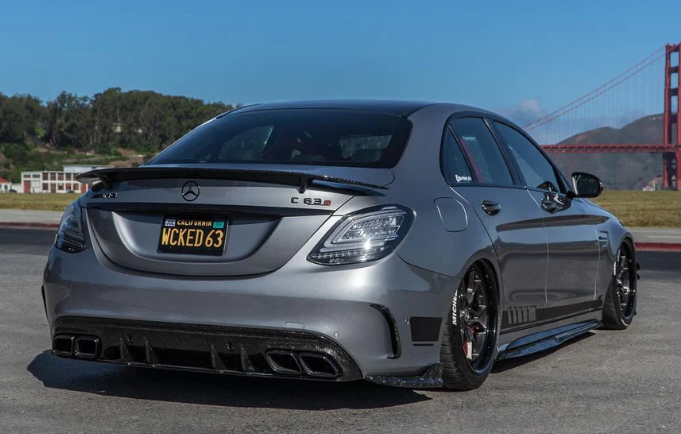Aftermarket car parts are the go-to for automotive enthusiasts looking to enhance performance or modify the look of their vehicles. But have you ever wondered how aftermarket manufacturers actually make these parts? This blog will give you a behind-the-scenes look into the process, breaking it down into stages, from design to production. For anyone serious about car mods, understanding how these parts are made is crucial.
The Design Phase: Turning Ideas into Reality
Before any aftermarket car part hits the shelves of an automotive parts store, it begins with an idea. The design phase is where manufacturers lay the foundation for what’s to come. This is one of the most crucial stages, especially for high-performance vehicles like Volkswagen Golf, Audi, BMW, and Mercedes.
Analysing the original equipment manufacturer (OEM) standards first helps manufacturers make sure the aftermarket parts will either equal or surpass their quality. For instance, producers of an aftermarket carbon fibre hood for a BMW research the factory version to guarantee the replacement will fit correctly.
Key technologies used in the design phase include:
CAD (Computer-Aided Design): Designed to provide exact digital representations of the part.
3D scanning will help to guarantee that the new part will fit exactly as the original does.
Finite Element Analysis (FEA): To test the strength and performance of materials before production.
This design process ensures that the aftermarket car parts are not only aesthetically pleasing but also functional and performance-oriented.
Material Selection: Quality Matters
Whether it's for daily use or track performance, aftermarket producers are well-known for providing a variety of materials that let vehicle lovers select components that best fit their demands. Production of automotive parts depends critically on material selection.
Common materials used in aftermarket auto parts include:
Aluminium: Ideal for components like exhaust systems or suspension parts due to its lightweight and corrosion resistance.
Carbon Fiber: Known for being both lightweight and strong, perfect for body kits, hoods, and aerodynamic upgrades.
Steel: Often used in performance brake rotors, and other structural components due to its strength.
Titanium: Frequently used in high-performance exhaust systems because of its heat resistance and durability.
The material selected directly influences not only performance but also weight and lifetime for performance automotive auto parts such radiators, suspensions systems, or intercoolers.
Manufacturing Techniques: Precision in Production
Production comes next once the materials and design have been chosen. Aftermarket car parts are produced using a few fundamental manufacturing techniques. Every technique is selected depending on the particular portion and material.
1. CNC Machining
CNC (Computer Numerical Control) machining is widely used for parts that require precise cutting, such as brake calipers, suspension components, and engine parts. CNC machines follow the exact dimensions laid out in the design phase to create parts with extremely tight tolerances.
2. Casting
Casting is a common technique for parts such as intake manifolds or engine blocks. Once heated until molten, metal is put into moulds where it cools and hardens into the intended form. For difficult or expensive to build complicated forms with machining alone, this approach is preferred.
3. Carbon Fiber Layup
With carbon fibre body kits or hoods, hand layup is a common method used. Over a mould, several layers of carbon fibre sheets are put; subsequently, resin is sprayed to link the fibres together. The part is then robust and lightweight after being cured in an oven or autoclave.
4. Forging
Forging is common for parts that need extra strength, like suspension arms or aftermarket wheels. The process involves heating metal and then shaping it under extreme pressure, which makes the material more durable.
Quality Control: Ensuring Top Performance
For car enthusiasts, subpar parts are unacceptable. That’s why quality control is critical in the production of aftermarket auto parts. Manufacturers often subject their parts to rigorous testing before they are shipped out to ensure they meet high-performance standards.
Quality control measures include:
Fitment testing: Ensuring the part will fit the specific make and model without issue.
Stress testing: Parts like performance suspension components or brake kits are tested under extreme conditions to ensure they perform at high speeds or under heavy loads.
Aesthetic inspection: Especially for body kits or other visible components, manufacturers check for imperfections to maintain top-notch quality.
These tests ensure that whether you're installing a Volkswagen Golf body kit or a Mercedes-Benz AMG exhaust system, you’re getting a part that’s built to last and perform.
Trends in Aftermarket Manufacturing
The aftermarket automotive parts industry is constantly evolving, with manufacturers leveraging new technologies to enhance their offerings. Here are a couple of trends shaping the future:
1. 3D Printing
Some aftermarket car parts manufacturers have started using 3D printing for rapid prototyping and even final production in certain cases. This technology allows for quicker turnaround times and the ability to create custom parts with intricate designs that would be impossible using traditional methods.
2. Sustainability
Manufacturers are looking for ways to cut waste and energy usage as sustainability takes front stage. Certain parts now feature recycled materials, and environmentally friendly production techniques are under development.
Final Thoughts: The Power of Aftermarket Parts
Aftermarket car auto parts are the lifeblood of the modification community. Whether you’re after a more aggressive look, improved performance, or both, aftermarket manufacturers work hard to create high-quality, reliable parts. From initial design to final quality control, these companies ensure that car enthusiasts get what they need to take their vehicles to the next level.
If you’re in the market for aftermarket car parts for your Audi, BMW, Volkswagen, or Mercedes, visit us at Euro Empire Auto. Our Brisbane-based store, along with our online auto parts shop, offers top-tier parts for your European vehicle. Browse our collection today and see why we’re Australia’s go-to for performance parts.










Leave a comment
This site is protected by hCaptcha and the hCaptcha Privacy Policy and Terms of Service apply.